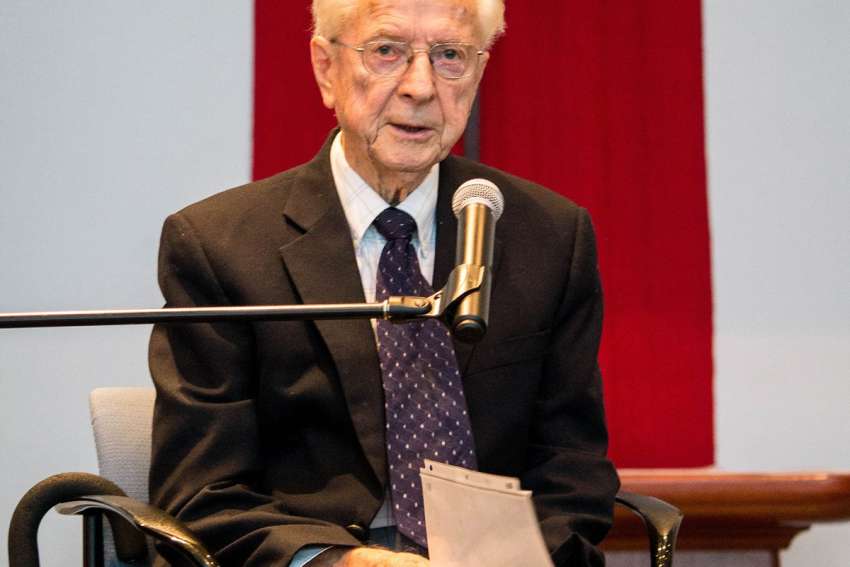Bishop De Roo was a man on a mission. He spent his 59 years as a bishop serving as an evangelist for the teaching of the Vatican council. He also found himself in trouble with the Vatican for supporting the priestly ordination of women and married men. An investment he made for his diocese lost millions of dollars, but a civil court later ruled that the investment had been sound. Mostly, he was an advocate for people who are often forgotten – Indigenous people, women, youth, the poor and others. Beyond the boundaries of his Vancouver Island diocese, he helped to shape the Canadian Catholic Church.
Without him, would Canada’s bishops have issued a steady stream of statements on issues of injustice such as the proposed Mackenzie Valley Pipeline, unemployment and world peace? The Council spoke of a Church that listens to “the signs of the times.” Sometimes, that phrase was seen as a sign that the Church is being compromised by today’s world. But not for Bishop De Roo. He read the signs and responded with a prophet’s fire, urging society’s leaders to heed Jesus’ concern for those on the margins.
The Canadian bishops’ Social Affairs Commission’s 1983 statement, Ethical Reflections on the Economic Crisis, put De Roo in the spotlight as he was then chair of the commission. It created a national debate that lasted for months over the type of nation we should strive to create.
De Roo also challenged the Church to be what Vatican II called it to be: The servant of the Kingdom of God. “Christianity is a way of life even more than it is an assembly of believers, an array of teachings, or a code of ethical conduct, important as these may be,” he once said.
Novalis this year published a collection of the bishop’s teachings: Remi De Roo, Pilgrim and Prophet: Wisdom for Today’s Church in the World, edited by his long-time collaborators, Pearl Gervais and Douglas Roche. The publication marked the 100th anniversary of his birth.
The book is a service to the Canadian Church in that it enables us to retrieve from memory not only the man but the teachings he promoted. Despite the technological and economic changes since Vatican II, our problems today are similar to those in that earlier era. Social inequality has, if anything, grown, and the voices of those on society’s margins register even less than before. We continue to need ethical reflection on the direction of society. The Church has a contribution to make.
Most of De Roo’s comments on the state of the Church sound less controversial today. He promoted Vatican II teachings which have become ingrained in our words if not in our actions. However, he and other Canadian bishops of that era did stir the pot on the role of women in the Church.
Bishop De Roo found in the Vatican II assertion of the equal dignity of all members of the Church a principle in conflict with the Church’s practice. As early as 1969, he told the Catholic Women’s League, “The issue of discrimination against women should not be evaded. It is like a submerged emotional iceberg beneath a few other problems in the Church today.”
He was critical of priests who were hesitant to permit women to play a full role in the Church. “Does this reticence on the part of priests indicate that they fear the consequences of letting women assume their full responsibilities?”
As well, decades before Indian residential schools became a burning issue, he addressed Church complicity in the colonial subjugation of Indigenous peoples: “The Church often participated in the cultural domination of Native Peoples through inadequate understanding of Gospel values and a limited Gospel vision.”
Remi De Roo: Pilgrim and Prophet is not a book to be read from front to back in a few sittings and then put aside. It offers much to chew on, a few pages at a time. Was Remi De Roo a radical? If so, his was a radicalism nurtured during the Depression era in rural Manitoba where he was raised. He himself came from the margins.


